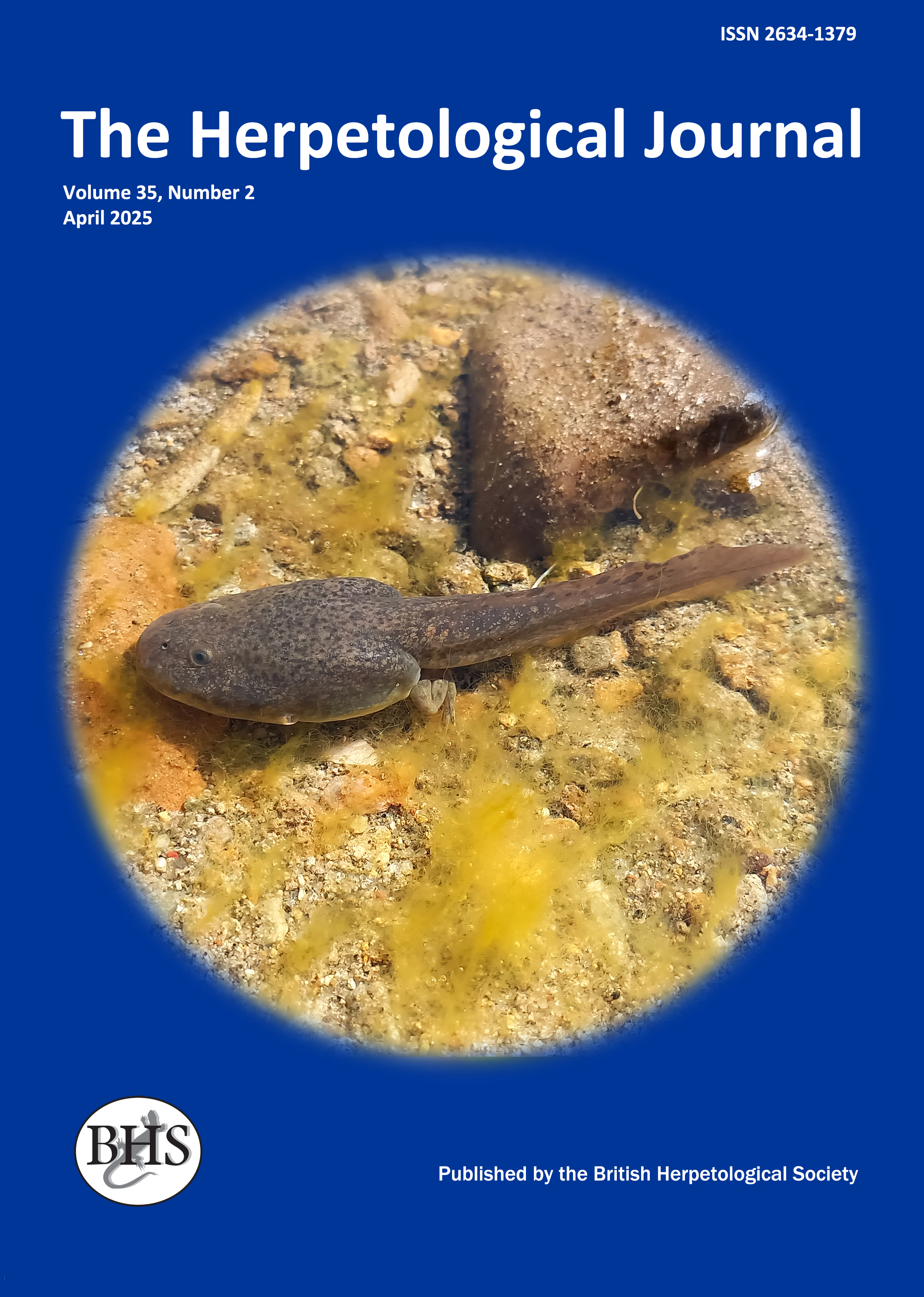
The Herpetological Journal
The Herpetological Journal is the Society's prestigious quarterly scientific journal. Articles are listed in Biological Abstracts, Current Awareness in Biological Sciences,Current Contents, Science Citation Index, and Zoological Record.
ISSN 0268-0130
2021 Impact Factor from Clarivate for the Herpetological Journal is 1.194, an increase of 0.332 from 2020.
pdf 04. Long-term, climate change-related shifts in monthly patterns of roadkilled Mediterranean snakes (Hierophis viridiflavus)
936 downloads
Open Access
pp. 97-102
Authors: Capula, Massimo; Rugiero, Lorenzo; Capizzi, Dario; Milana, Giuliano; Vignoli, Leonardo; Franco, Daniel; Petrozzi, Fabio & Luiselli, Luca
Abstract: Ectothermic vertebrates depend on ambient temperatures for their activities. Thus, global warming is expected to influence several aspects of their ecology. Here, we use a >20 year (1990–2011) dataset on monthly numbers of roadkills in an area of central Italy in order to document whether the phenology of a Mediterranean population of Western whip snakes (Hierophis viridiflavus) has changed over time. Annual variation of roadkills was correlated to five climatic variables: (i) mean annual air temperature, (ii) mean February air temperature, (iii) mean July air temperature, (iv) yearly number of rainy days, and (v) number of rainstorm days. Increases in mean annual temperature were positively related to the number of roadkills at the early (February and March) and late (December) phases of above-ground activity, but were negatively related to the number of roadkills during summer (June and July). Intriguingly, we documented a shift in the annual mortality peak over the study period, possibly indicating temporal changes of the mating season due to global warming. Increasing mean air temperatures apparently caused an earlier onset of above-ground activity of snakes and delayed hibernation, but reduced the intensity of snake above-ground activity during the hottest and driest period of the year. Rainfall variables had no impact on snake activity.
Keywords: PHENOLOGY, SNAKES, GLOBAL WARMING, ROADKILLS

